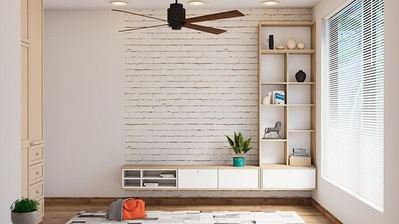Tips to have an energy-efficient home

With the rise of eco-consciousness, more and more households are now compelled to take a closer look at their energy consumption and make some adjustments to their daily habits. Going green has two main draws. On the one hand, it reduces individual carbon footprints and saves plenty of valuable resources. On the other, it significantly reduces your monthly utility bills. This guide will outline some ways you can become more energy-efficient to help you take your first green steps, right at home!
Insulate Your Home
Insulating your apartment or family house goes a long way in optimizing your energy consumption (hence it being a major construction guideline for new homes). Proper insulation helps trap heat inside during the winter and keep it out in summer, which decreases your reliance on heating and cooling appliances. Pay attention to floors, walls, the ceiling, and the attic. Bringing in a contractor is your best chance to have the job professionally and reliably done.
Replace Your Thermostat
We tend to forget this, but lowering your thermostat by just a few degrees can make quite a difference in your home’s total energy consumption. According to the dedicated environmentalists at Tiny House Huge Ideas, replacing your old thermostat with a smart or programmable one eliminates the need for manual adjustments and maximizes your home’s convenience and energy profile. So, be sure to look for comparative guides and product reviews to find the best model on the market.
Upgrade Your HVAC System
Decades-old HVAC systems can be a serious culprit when it comes to residential energy overconsumption. Whether it’s caused by faulty wiring, a tubing problem, or a filter that needs changing, all these can hinder the proper functioning of your system and inflate your monthly utilities. Not to mention the impact it can have on indoor air quality. As such, schedule regular maintenance with an HVAC technician and ask for recommendations on how to optimize your system’s efficiency.

Install Fans
That cold breeze from your air conditioning unit is certainly nice, but it’s one of the most energy-intensive appliances around the home. By contrast, traditional ceiling fans or standing ones only use a fraction of the electricity that air conditioners do; this is bound to impact your summertime bills tremendously. Fans come in plenty of sizes, designs, and options, so scour around your local store to find the one that will best complement your rooms.
Opt for Energy-Efficient Appliances
Whenever you’re shopping for a brand-new fridge, washer and dryer, or an electric oven, always go for the most energy-saving options. They use less electricity and water and are superb investments overall, helping increase your home’s worth and potential resale value. Modern manufacturers factor this in to make these appliances as affordable as possible. So, swapping out an old washing machine or freezer with a smart, energy-efficient one can be a nice way to go green.
Install a Tankless Water Heater
While we’re on the topic of appliances, conventional water heaters aren’t exactly the most eco-friendly option. As an alternative, demand-type water heaters produce hot water only when needed; this eliminates the need for standby energy losses and reduces your bills. Besides, they’re far less bulky, free up floor space, and you don’t need to wait for the tank to fill up to draw yourself a warm bath. There are plenty of models to look into, some make sure you do some online research and compare your options.
Be Smart with Lighting
Lights play a vital part in homes; they provide clarity, warmth, and a cozy ambiance. However, certain lights can be downright energy monsters, particularly when left on for extended periods. Whenever you can’t use natural lighting, switch out your incandescent light bulbs with LED ones, far more energy-efficient and durable. Since lighting accounts for roughly 10-15% of total residential energy consumption, turning them off when you don’t need them will help you save plenty of money.
Plant Trees
Last but not least, if you’re lucky enough to own a front lawn or a backyard, use that space to plant trees and to provide shade during the summer. This will alleviate the need to turn on the air conditioning and decrease cooling-related costs. No to mention that well-maintained greeneries are charming and will boost your property’s curb appeal!
All in all, going green is longer just a trend; it’s become a necessity. Changing our habits, not simply for the sake of our wallets but for the future of the planet as well, is now more critical than ever. By upgrading your home and making it energy-efficient, you can expect to reduce your carbon emissions, save valuable resources, and reduce your monthly bills by at least half.


